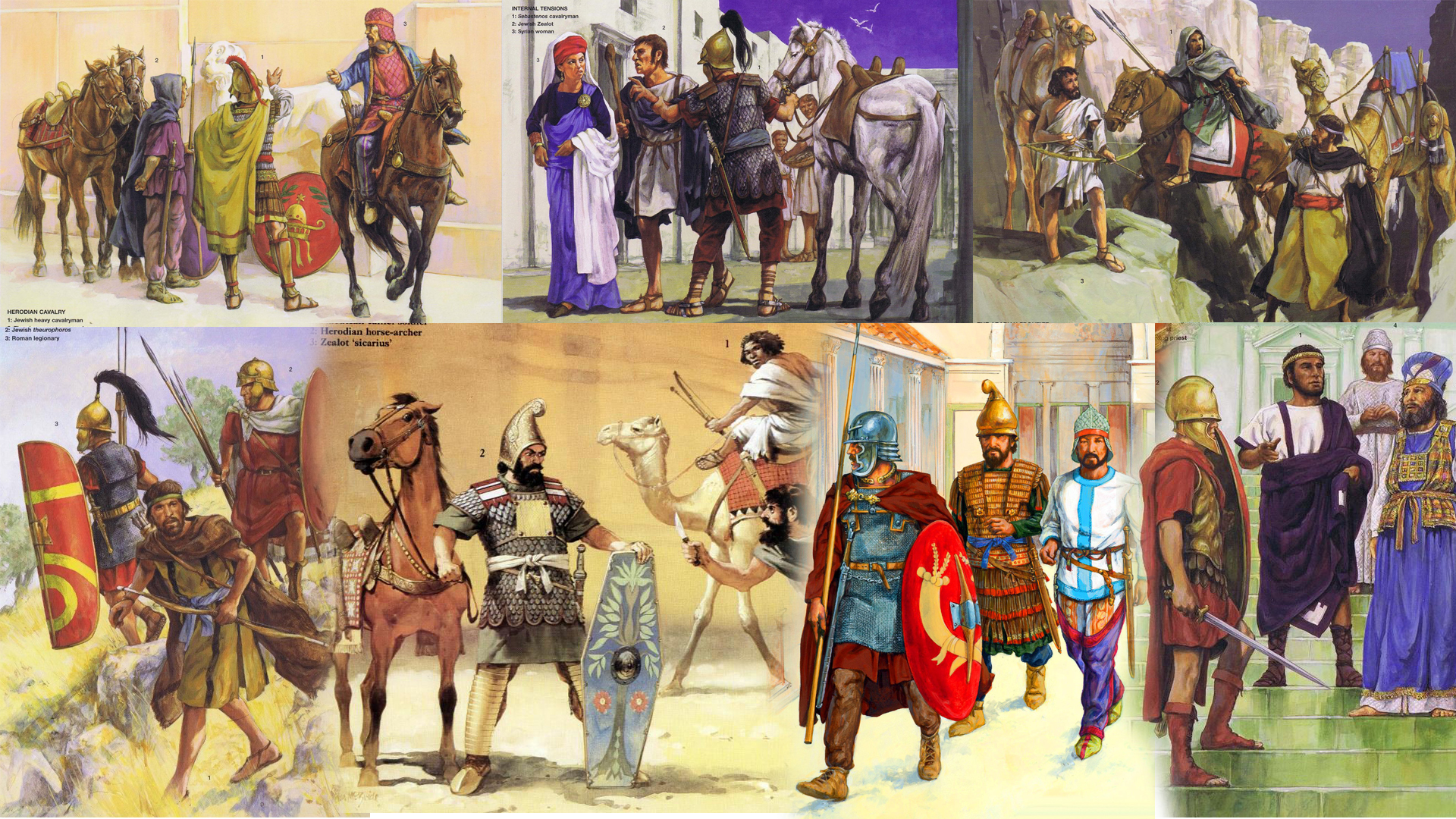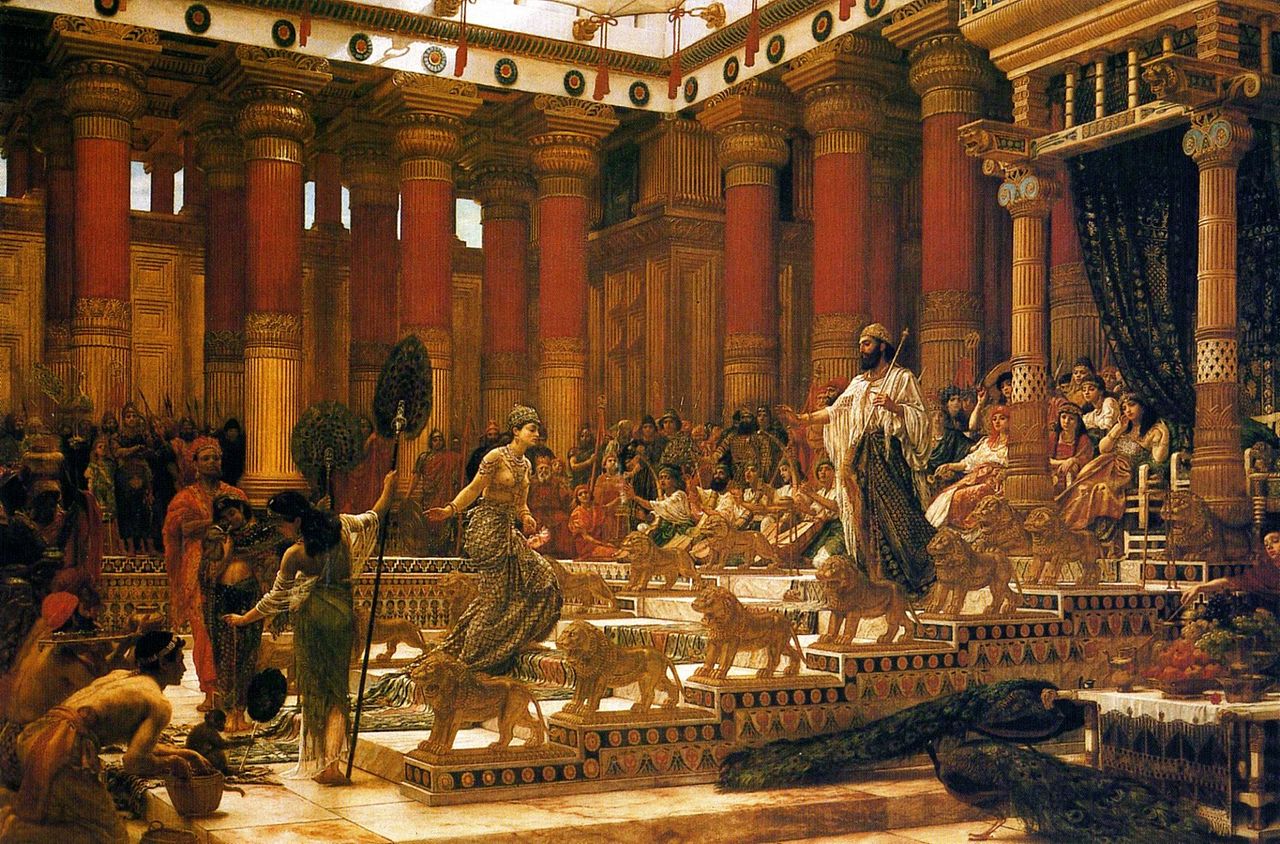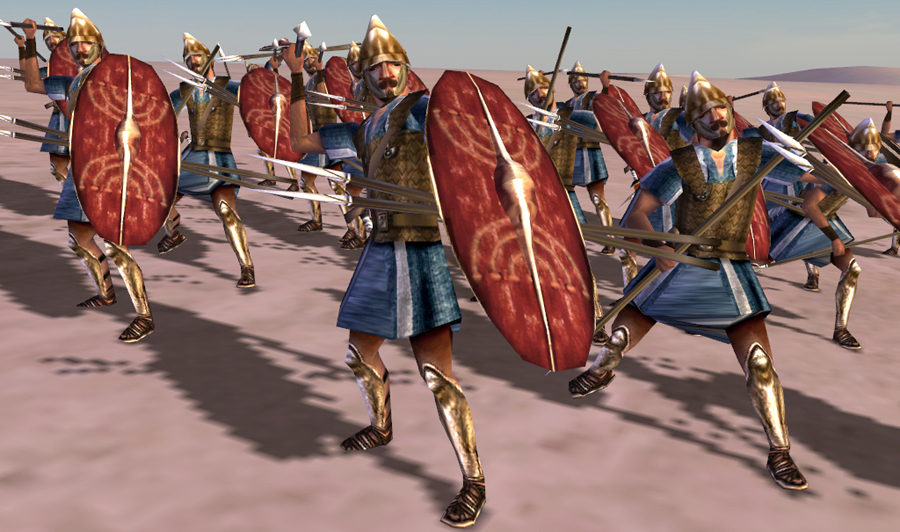
Ancient origins: The ancient Kingdom of Judah and Israel
The state of Israel (מְדִינַת יִשְׂרָאֵל) emerged from parts of Canaan which formed vassal states paying tribute to the New Kingdom of Egypt. Part of the myth of the origins was independance from Egypt, through the exodus and well-known biblical/ancient testament texts. Ancient Semitic-speaking peoples native to this area saw limited warfare, only border squabbles around wells and other valuable assets in the region, in between ancient Semitic-speaking peoples. The Caananite culture and monotheistic religion were distinctive trademarks. Economy was rural, centered around small states and herdsmen, shepherds. Unification, if any in a kingdom is only attested by the collectve name found on the Merneptah Stele about 1200 BCE. One of the earliest battle pitting a composite, tribal army of 10,000 and 2,000 chariots against Shalmaneser III, king of Assyria. The Battle of Qarqar (853 BC) pitted 11 kings including Ahab, king of Israel against the Assyrians and won.There were two kingdoms in existence during the late bronze age as attested by most scholars, the Kingdom of Israel, which is attested ca. 900 BCE and the Kingdom of Judah ca. 700 BCE. But the first was probably not a military powerhouse, as it was crushed at an unknown date by the Assyrian army, by then the mighiest military machine of the region circa 720 BCE. Subjection began. It also comprised most probably the southern "Kingdom of Judah" centered around Jerusalem, by then already the largest urban center in the whole region, but only a small town with a mighty citadel. It is linked with the legendary history of David and Solomon in the 10th century BCE. There was widespread literacy in the army and civilian elites, as shown by the written orders found in many military fortress built around the kingdom.

It has been said often than the Kingdom's early military successes has been legendary, securing a state which borders are more of less the same as today. Armies of the time comprised classic elements found in many other armies: Elites were charioteers. A palace guard also deployed in battle existed, heavy spearmen, well trained and protected. The rest of the infantry comprised light levied spearmen from cities, garrison troops which had some protection and good training, archers, swordsmen, and spearmen, and levied javelineers and slingers from villages. We know very little about tactics of the time or even the scale of any army.
Assyrian and Egyptian rule
It is known however, that when the Neo-Assyrian Empire attacked and defeated the Egyptians in 701 BC, Sennacherib threatened to submission Byblos, Ashdod, Ammon, Moab and Edom or submitted city-states such as Sidon and Ashkelon, and tried to take Jerusalem. The city was besieged but eventually won on the long run: Sennacherib has to leave the area and Hezekiah remained in power, but as a vassal of Assyria. The Siege of Lachish happened around the same time. Nearly one century later during the epic battle of Megiddo in 609 BC, Josiah refused to let the Egyptians pass in his territory to attack the Assyrians, and a battle followed, that he lost, dying in the process. This happened before the long, protracted Jewish–Babylonian war, which concluded with the Siege of Jerusalem in 597 BC ans eventual capture of the city by Nebuchadnezzar. King Jehoiachin and all the Jewish aristocracy was made prisoner and deported as the bulk of the population, to Babylon. Ten years after, in 587 BC, Zedekiah (appointed by Babylone) rebelled against Babylonia, but Nebuchadnezzar returned to besiege Jerusalem, starved to submission. The whole population was deported and enslaved and thus, ended the Kingdom of Jerusalem/Judah. In 539 BCE, Babylonian domination ended, as the region was conquered by Persian King Cyrus.Persian rule
Under Persian rule, Judaean troops were integrated into the larger Persian army. Little is known about its composition. Jerusalem has been depopulated, fell into ruins and its population was perhaps as far as 500 or less. The only true urban city was Yehud, but the bulk of the population lived in small unwalled villages. The last local governor was Yehezqiyah, just before the start of Hellenistic rule.Hellenistic rule
The whole region fell into the new empire of Alexander the Great from 332 BCE onwards. The local governor or satrap was maintained. After the death of Alexander, the region fell into the new Seleucid Empire. From then on, with a war ongoing with Ptolemaic Egypt (Diadochi warring states period) the whole region of Coele-Syria was intensively militarized. Although Seleucid rule was contested un ancient Judea, and repressed ruthlessely (Zealots revolts) with armoured chariots and horse archers, Judaean auxiliaries became an important part of the Seleucid contingent in the region. Still wearing the traditional phrygian helmet, they had some armor, leather, scales or chainmail later, and used spears and javelins. The most obvious national symbol would have been the sacred tree
Judaean Peltasts (CATW)
One of the most striking military unit of that era was the Maccabees, a Jewish warrior community spearheading a national liberation movement under Antiochus IV Epiphanes and his son Antiochus V Eupator. They eventually prevailed and founded the Hasmonean royal dynasty, establishing total independence for about 100 years, from 164 BCE to 63 BCE.
The Hasmonean Dynasty
During the fall of the Seleucids to the Roman civil wars era which ended with a partial control from Rome, with a Roman-appointed king, Herod, and fundation of the Herodian dynasty, the Hasmonean armies were very much a Hellenistic army with old Oriental influence in some aspects, notably cavalry. Horse archers indeed formed the staple of the Hasmonean cavalry ranging from light to heavy. The latter were versatile warriors mastering the sword, lance and bow, and fighting dismounted if needed. For the infantry, Roman influence was only prevalent through Ascepiodotos reforms in 143 BC: Light thureophoroi formed the bulk of the infantry, followed by Thorakitai, essentially the same but heavier, versatile infantry armed with a spear as primay weapon, sword and in some cases javelins.More specialized, the heavy peltast type was somewhat intermediary. At the top were the Royal Guards, essentially like the Thorakitai but even better trained and able to be used as bowmen if needed. Auxilary cavalry and archers, but also longers recruited from the countryside formed a large part of the levied troops. Nothing is known however about using mercenaries. Chariots would have been used also, following the Hellenistic example.
Roman rule
Herod was Rome's most important ally in this area and era. The country simply passed from a status of province of the Seleukids to of an independent kingdom under Roman protectorate. Herod was a ruthless ruler which had been vilified over time and a corrupted "collaborator" of the Romans. He was also however an able administrator and created a powerful army on it's own right, capable to defend the kingdom without Rome's legions.At it's peak this new Romanized Judaean army fielded around 40,000 men. These were native Judaean troops, reinforced with mercenaries of far away peoples, Germanic tribesmen as well as Parthians and even Roman troops, often used as drill officers. This varied army had sme heavy Hellenistic characters, not only in style and equipment, armour and cavalry, but Roman influence was prevalent in the core of heavy infantry. Israeli archaeology since had fed the topic with large amounts of weapons and armour fragments.
This army also showed oriental influences up to its Command & structure. The heaviest, most elite corps was the royal guard, which was made of picked-up men equally giften in all sorts of weapons and gifted horsemen as well. Judaean cavalry was quite important, comprising javelineers, lancers and horse archers either light or heavy. Auxiliaries were mostly Parthians. Among foor mercenaries, Iturean archers were common, as well as Syrians. The Judaean heavy infantry was subdivided between a sword-armed heavy infantry very much in the Roman fashion and a spear infantry related to the Hellenistic era Torakitai. However nothing is known about the use of the chariot at that time; This army took part in the First and Second Nabatean War, campaigning deep in Arabia with Aelius Gallus. There was an auxiliary unit in service with the Roman Army, or local origin: The Ascalonitanorum regiment, from the city of Ascalon and also called Ascalonitani. Their language was Aramaic.
Sources/Read More
Jewish Military historyKingdom of Judah
Herodian dynasty
Hasmonean dynasty
Osprey Publishing Armies of Herod the great
About King Herod influence
Jews and Pagans in Late Antique Judaea. The Case of the Beit Nattif Workshop (pdf)
♕ Aquitani & Vasci ♕ Celts ♕ Indo-greeks ♕ Veneti ♕ Yuezhi ♕ Indians ♕ Etruscans ♕ Numidians ♕ Samnites ♕ Judaean ♕ Ancient Chinese ♕ Corsico-Sardinians
⚔ Cingetos ⚔ Immortals ⚔ Cavaros ⚔ Cataphract ⚔ Romphaiorioi ⚔ Chalkaspidai ⚔ Devotio Warrior ⚔ Scythian Horse archer ⚔ The Ambactos ⚔ Iberian warfare ⚔ Illyrian warriors ⚔ Germanic spearmen ⚔ Carthaginian Hoplite ⚔ Thracian Peltast ⚔ Caetrati ⚔ Ensiferi ⚔ Hippakontistai ⚔ Hastati ⚔ Gaesatae ⚔ Cretan Archer ⚔ Thorakitai ⚔ Soldurii ⚔ Iphikrates ⚔ Kardaka ⚔ The thureophoroi